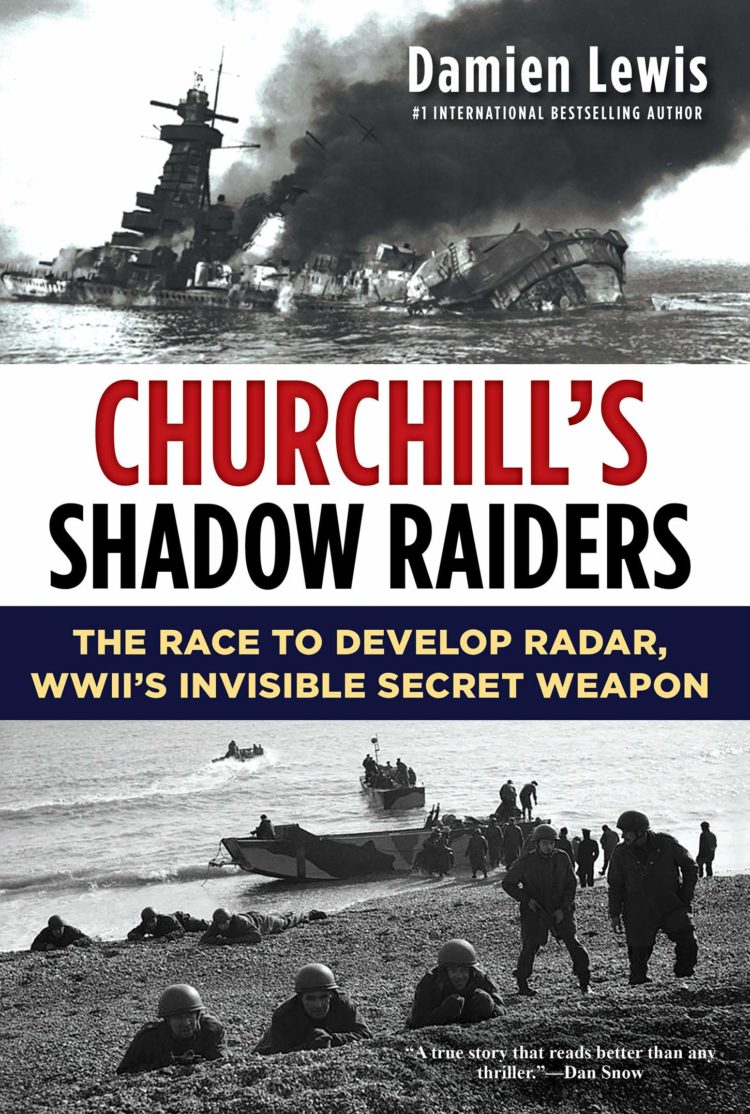Disclaimer: A copy of the book was provided to SOFREP for review purposes.
Damien Lewis’ latest book, “Churchill’s Shadow Raiders: The Race to Develop Radar, WWII’s Invisible Secret Weapon” is a gripping popular history book. It recounts the beginnings of British paratroopers and Britain’s struggle to win the Radar War against Nazi Germany.
Nowadays, the value afforded by a paratrooper is self-evident. Nevertheless, that was not the case in Britain during the first years of WWII.
At the beginning of 1941, Britain was losing everywhere and domestic morale was low. Churchill needed to show that British teeth could bite. The nascent concept of the paratrooper, and his ability to deploy far and wide, was chosen as the means of doing so. Thus Operation Colossus, the first British airborne operation, was born. Its target would be the destruction of an aqueduct in southern Italy. The aqueduct’s destruction would be both a logistics and morale blow to the Italians. Following Operation Colossus’ outcome, the idea of paratroopers lost favor. This was soon to change.
At this point, “Churchill’s Shadow Raiders” interweaves the history of British airborne operations with the unfolding of the Radar War. The Radar War was the struggle for achieving supremacy in radio-tracking capabilities; such supremacy could be translated both offensively and defensively.
Britain had fortified herself with the Chain Home, a series of radar stations cordoning the island. Their existence was pivotal in allowing her to prevail in the Battle of Britain. Yet, complacency and pride had imprinted on the minds of many British top officials that Germany had not invented radar technology. Still, all indications pointed to the contrary: high percentages of downed British bombers and fighters; leaked intelligence; and reconnaissance photographs. Yet, many, hardheadedly, refused to accept the evident.
Enter British paratroopers Act II. Intelligence had indicated that what was thought to be a highly advanced form of rotating and portable radar installation was stationed in northern France. Some in Britain rightly suspected that a chain of such stations was responsible for the lethal accuracy of Nazi air defenses — and even Luftwaffe’s pinpoint offensive capabilities. The British needed to snatch the radar and bring it back home to study it. This would materialize into Operation Biting, an operation whose tremendous value to the Allied victory in WWII, Lewis rightly underscores.
Finally, the author brings the whole book full circle by recounting how British understanding of the German’s radar system — and in extension the British paratroopers themselves — was of paramount importance in the success of D-Day.
The above synopsis is purposefully cursory as despite this being a history book the reader will derive great pleasure in discovering himself how the events unfolded. Lewis does a superb job in bringing to life both the first missions of the British paratroopers, their contribution to the Radar War, and the contours of the Radar War itself. His narrative balances fluidity with historicity to great effect: “Churchill’s Raiders” reads like an adventure novel and the reader may be excused in forgetting that it is a history book.
I can only point to one narrative shortcoming worth mentioning: Lewis, in justifiably trying to do justice to as many of the people as possible, who were part of the events recounted in the book, he somewhat inundates the reader with names. Although he offers a description and brief background of each person this felt slightly forced at times and somewhat crinkled the narrative.
Nevertheless, “Churchill’s Raiders” is after all a history book and should primarily be judged as such. And in that regard, it is nearly flawless. In the whole book, I only detected two instances where there was a factual discrepancy — both of the instances were minor. And although the author does not use footnotes this is the norm with popular history books and actually helps in driving forth his account. Lewis lists all his sources for the reader eager in delving deeper into the events.
In conclusion, I would unabashedly recommend “Churchill’s Shadow Raiders” to anyone interest in the history of WWII, paratroopers, or the development of the radar. It is a testament to Lewis’s skill in writing the book that I felt participating in the events he described. I will eagerly wait for the author’s next book.
This article was written by C. A., SOFREP’s mysterious copyeditor.










COMMENTS
You must become a subscriber or login to view or post comments on this article.